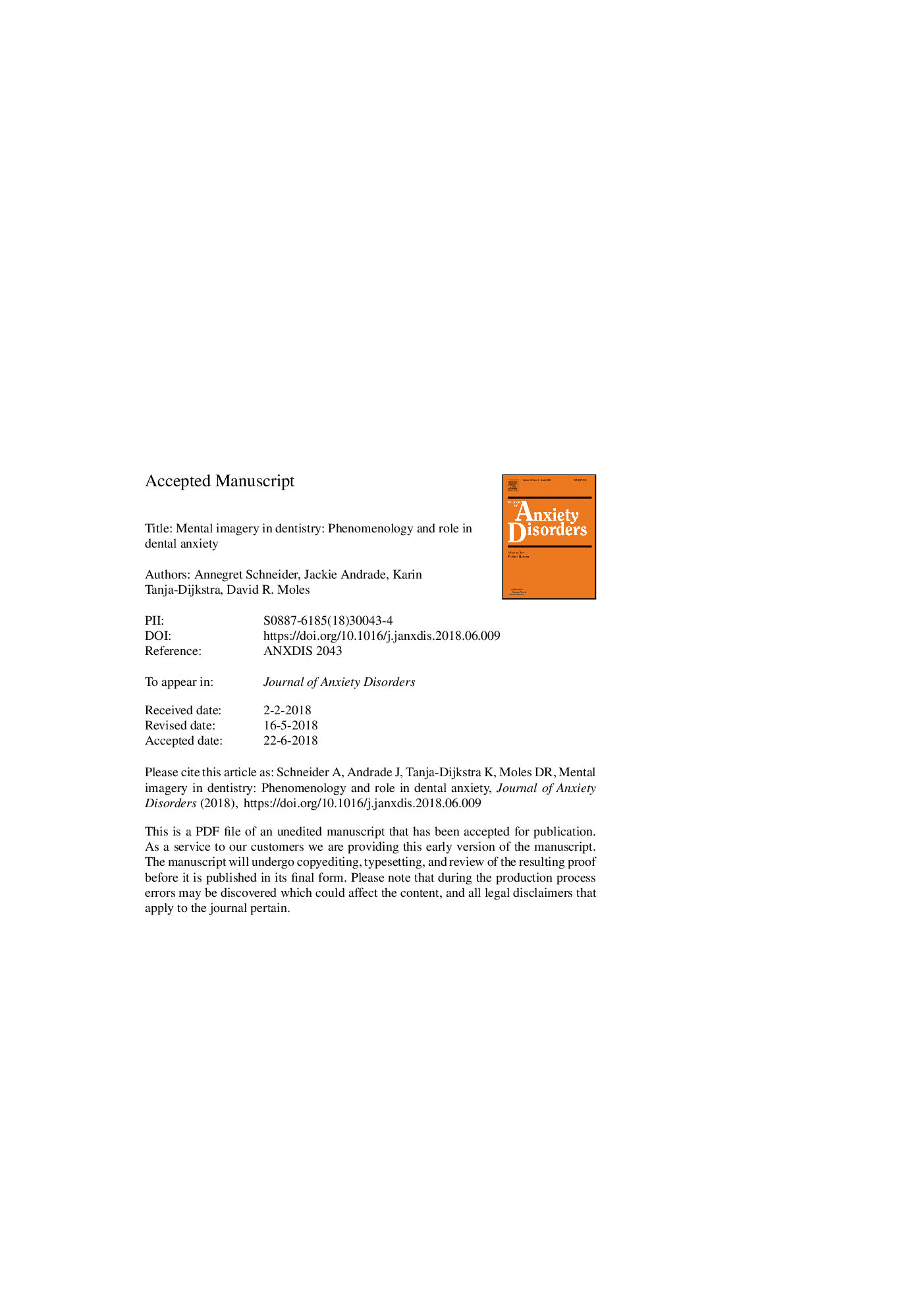| Article ID | Journal | Published Year | Pages | File Type |
|---|---|---|---|---|
| 7266831 | Journal of Anxiety Disorders | 2018 | 39 Pages |
Abstract
Dental anxiety is a prevalent problem with marked psychological, physical and public health implications. Based on cognitive theory and evidence, we hypothesized that vivid, sensory image-based cognitions play a role in dental anxiety. A quantitative online survey (Nâ¯=â¯306) and qualitative semi-structured interviews (Nâ¯=â¯18) found that vivid sensory images were common irrespective of dental anxiety levels, but that their content, associated distress and responses varied. Participants reporting higher anxiety experienced intense and intrusive fear-provoking dental imagery focusing on unpleasant sensations, which were associated with the intrusive recollection of negative past experiences and avoidance of dentistry. Participants with lower anxiety ratings, reported images that were less distressing and centered around reassuring aspects and positive appointment outcomes, potentially acting as protective factors against dental anxiety and facilitating appointment attendance. The inclusion of components aimed at reducing intrusive memories and dental imagery rescripting may help improve interventions for dental anxiety.
Related Topics
Health Sciences
Medicine and Dentistry
Psychiatry and Mental Health
Authors
Annegret Schneider, Jackie Andrade, Karin Tanja-Dijkstra, David R. Moles,
